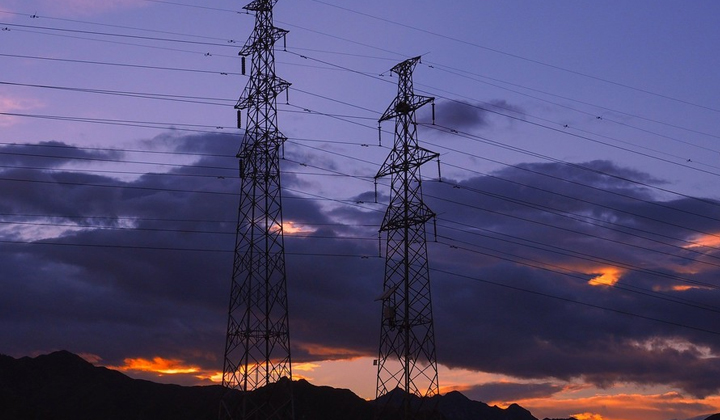Trending Now
- IPL 2024 begins with a bang. First contest between CSK and RCB.
- Election commission allots mike symbol to Naam Thamizhar Katchi
- AIADMK promises to urge for AIIMS in Coimbatore, in its election manifesto.
- Ponmudi becomes higher education minister.
Columns
There is no power shortage in the country – but the entire sector is in a mess
![]() August 18, 2016
August 18, 2016
The power sector urgently needs better financial management and more investment in transmission and distribution infrastructure, not capacity addition
“There is no shortage of power in the country,” said energy minister Piyush Goyal recently. “We have sufficient power and if any state wants to buy power, one can do so from a portal now”. He does not foresee any shortage in the next four to five years, Goyal said in another interview in June.
India more than doubled its electricity generation capacity between 2005 and 2015, with coal-based plants accounting for more than 60% of the new capacity. Installed capacity stands at 300,000 MW according to the Central Electricity Authority, as of May 2016.
But it does not mean all is well. India’s electricity sector is a shambles. Severely indebted distribution companies, an ageing and leaky transmission and distribution infrastructure, unsustainable tariff regimes and pathetically low plant load factors or capacity utilisation have rendered past and ongoing investments, particularly in capacity addition, risk-prone and wasteful.
Goyal is aware of these problems. He has, to his credit, demonstrated a keenness to set the house in order. But his job is not being made any easier by the prime minister or states like Tamil Nadu that continue to insist on unnecessary enhancement of expensive and unpopular generation capacity at a time when attention and investment ought to be targeted elsewhere.
Non-starters
The continued pursuit of coal-fired ultra mega power projects, and the prime minister’s nuclear bonanza to the Americans, French and Russians are both likely to be non-starters that will cause much social disruption. In the unlikely event that the projects are realised, they will be unmitigated financial disasters well before the environmental and safety problems begin.
Neither pursuit makes sense financially. In June 2016, the Nuclear Power Corporation of India Ltd cancelled Westinghouse’s allocation in Gujarat and relocated the 6 x 1100 MW nuclear park to Andhra Pradesh’s Srikakulam district. An analysis by Institute of Energy Economics and Financial Analysis headquartered in the United States found that the first-of-their-kind Westinghouse AP1000 reactors will cost between Rs 2.4 lakh crore and Rs. 4.5 lakh crore to build – that is a per MW cost of between Rs 36 crores and Rs 68 crore. Grid connected solar plants cost Rs 6 crore per MW and coal power plants Rs 7 crore per MW.
In the unlikely event that construction begins early next year, the first plant will not come on stream until 2029. Electricity from that plant will cost between Rs 11.18 and 22.12 per kilowatt hour in 2029 when solar rates are expected to have dropped to Rs 3 per unit.
The ultra mega power project story is no different. In the seven years since the 4000 MW imported coal-based project was announced in Cheyyur, Tamil Nadu, capital cost for the project has gone up by 35% – from Rs 20,000 crore to Rs 27,000 crore.
The project’s dodgy financials have deterred investors. In 2015, the bidding process failed after all private sector bidders withdrew. The energy ministry has since suggested revisions to the bidding guidelines. As per the new suggestions, promoters will be allowed to own, instead of transfer, the project they build and operate, and convey fuel cost hikes and forex volatility to consumers.
“The fuel-cost pass-through will expose consumers and discoms to tariff volatility,” said the IEEFA which put the cost of electricity from Cheyyur at Rs 5.95 per kWh – two to five times higher than other such projects, and 85 paise higher than the recently announced solar tariff for Tamil Nadu.
“The real issue with the Tamil Nadu electricity sector is not the availability of power generating capacity, but the high indebtedness and grid transmission and distribution losses,” the report concludes. That is true for the country as a whole.
Between 2005 to 2015, the Tamil Nadu Generation and Distribution Corporation ran up losses of Rs 65,000 crore, and a debt of Rs 80,000 crore, making it among the top indebted discoms in the country. It began taking steps to repair the situation last year, announcing in March that it had cut losses by Rs 3000 crore. But two months later, within days of returning to power, Chief Minister J Jayalalithaa announced free electricity for the first 100 units of consumption, setting back the exchequer annually by Rs 1,607 crore. Eventually, credit-rating agencies ICRA and CARE downgraded its rating earlier this year, citing “exceptionally high” aggregate technical and commercial losses of 24.4% in 2014-15. The global grid average loss is 6% to 8% and the German high is 4% to 5%.
Transmission and distribution
Fixing this requires better financial management, and more investment in transmission and distribution infrastructure, not capacity addition. The transmission capacity just does not match the generation capacity. Global best practice recommends that for every MW of generation capacity added, 7 MVA of power transformation capacity in transmission and distribution be built. In India, only 3 MVA is added, according to a recent paper by ICICI Securities. A quarter of what little is transmitted is lost between the power plant busbar and the consumer.
Narendra Modi and Jayalalithaa have been announcing capacity additions in Ramanathapuram and Koodankulam. But if Cheyyur were to be built tomorrow, the infrastructure to evacuate its power does not exist. The TANGEDCO does not have money to buy itself an LED bulb, leave alone surpluses left to invest in evacuation capacity.
Every summer, Tamil Nadu lets substantial wind generation capacity idle or under-operate – the grid does not have the capacity to convey the electricity that would be generated if all the turbines ran to capacity. Thankfully, the Koodankulam Unit 1 that is located in this windy belt is a lemon with an average generating only 25% of its capacity. If it had operated at 80% capacity as well-designed nuclear plants do, Tamil Nadu would have been forced to shut down all wind turbines for the grid to accommodate the prioritised baseload from this plant.
The IEEFA estimates that India’s coal thermal plants generate only 58% of their capacity. That is pathetically low. Increasing capacity to 70% would wipe out the entire base load deficit without adding a single MW of generating capacity, estimated a rough 2015 estimate by CRISIL.
To sum up, the issue is that existing plants are under-utilised. Where is the need for new capacity?
Coal-based power plants are unbankable. Even Indian public sector banks, which are known for the devil-may-care attitude with extending loans are beginning to act cautious. The IEEFA finds that at 11%, the largest chunk of Indian banks’ stressed advances is to the power sector. Adding capacity would force new projects to operate at even lower capacities, eroding their ability to service loans.
Tamil Nadu and the rest of India should fix their creaky, leaky buckets before adding any new capacity to the grid.
Nityanand Jayaraman is a writer and social activist opposed to coal and nuclear projects. Mukul Kumar is a research scholar from Berkeley.
Nityanand Jayaraman, Mukul Kumar
Disclaimer: The views expressed above are the author’s own






















